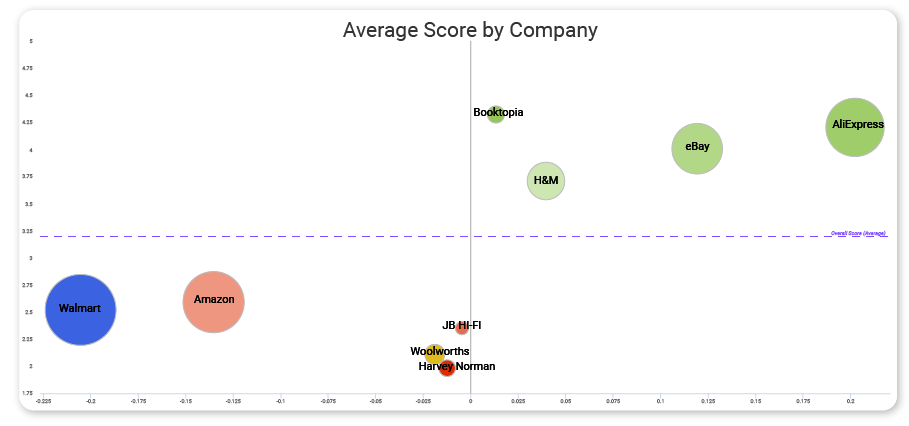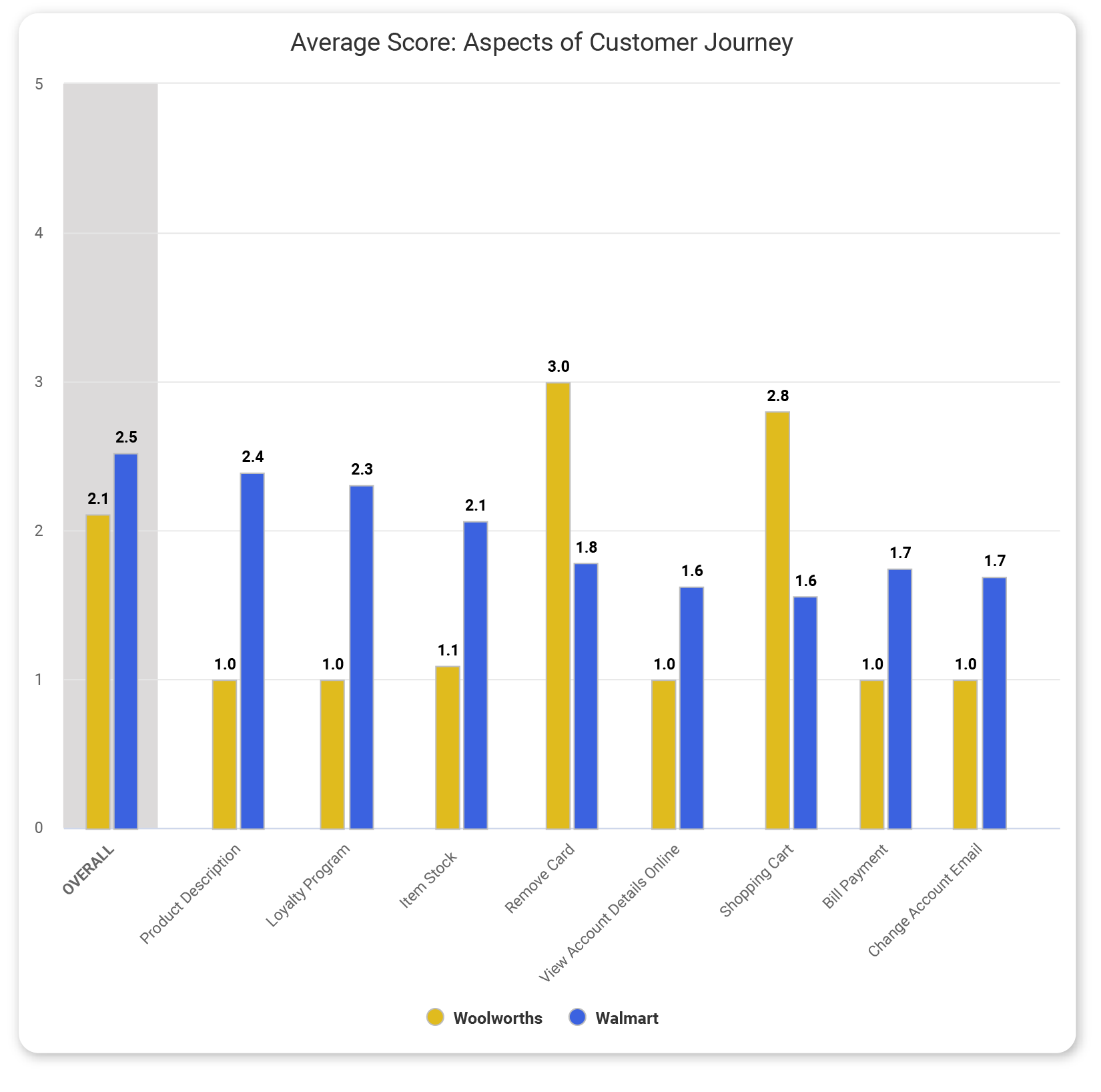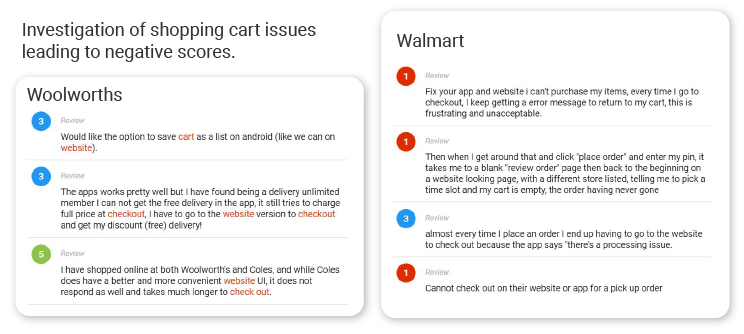This is the first in a series of posts focusing on the Touchpoint Ipiphany eCommerce Analysis and Reporting service. Our team of industry experts provides a comprehensive analysis of review data from competitors you choose along with your own business to uncover key opportunities to improve market share, RoI, and customer retention. In this post, we delve deeper into the importance of competitor analysis, expanding on the Walmart case study.
What is Competitor Analysis?
Competitor analysis is a structured investigation into the strengths and weaknesses of businesses in your market as a way to understand market positioning, opportunities, and threats that need to be addressed. This framework offers a valuable way to identify and rectify areas causing churn on your eCommerce platform.
Each stage of a customer’s interaction with your eCommerce platform is important to track and understand - the combination of these experiences leads to a customer’s overall view of your organisation, but each discrete point is an opportunity to make an impression and delight your customers. Competitors in your market will have strengths and weaknesses in their eCommerce platforms that differ from yours - each competitor weakness has the potential to become a strength for your business.
How Ipiphany Helps you perform a Competitor Analysis:
In order to perform a competitor analysis, we begin at the highest level to gain a broad understanding of market positioning, and then work our way down to a detailed level to understand specific aspects that drive your score and that of your competitors. All you need to do to know how your customers score your eCommerce platform is pay a quick visit to the App Store, TrustPilot, or anywhere reviews are left - but how does this help improve retention and RoI? How does this inform strategic business decisions for your platform? Ipiphany gives you the tools to answer these questions.
Let’s look at the average score of nine eCommerce platforms from around the world to get that quick, high-level understanding and assess each business’s position in the market.

Your organisation may wish to analyse data from closer, in-market competitors, but this wide range of eCommerce businesses represent the leaders in each of their markets, including those who only sell online (like Aliexpress and Amazon) as well as those with physical store locations.
Using Ipiphany, we can expand on the reasons for these scores in the open-text feedback to assess and prioritise areas of focus. For purposes of this analysis, we’ll compare two businesses that hold a similar share in different markets - Walmart and Woolworths - to identify similarities, differences, and areas of improvement for each business.
AI-Driven Insights for next-level analysis
To better understand the specific aspects of the online experience at Walmart and Woolworths, we’ll start with a broad comparison of the two businesses. Using the “Compare” tool in Ipiphany, we can categorise feedback by those discussing different aspects of the journey, breaking down the impact that these experiences have on the score at a detailed level.
Walmart outperforms Woolworths in several categories - Product Description, Loyalty Program, and View Account Details online, while Woolworths comes in higher in the ‘payment’ category, for Shopping Cart and Card Details. As an example, let’s investigate the “Shopping Cart” category to understand what Walmart could do to improve this aspect.
Using Ipiphany, we can isolate the reviews that discuss the Shopping Cart, and it is immediately clear that Walmart is suffering a processing issue that is extremely frustrating for customers. Woolworths has a lower frequency of comments, with customers still assigning a mid-to-high score, while Walmart’s customers assign a much lower score and offer precise details outlining their frustrations. Using this Analysis combined with device segmentation, Ipiphany is able to offer a level of detail to Walmart’s eCommerce team that they can solve this problem for their customers.
Competitor analysis is an incredibly important tool for any industry, but in the eCommerce world where margins are tight and competition is fierce, the ability to understand the differences between your platform and your competitors can provide a strategic advantage, offering a data-driven foundation to help gain the insight you need to make decisions that have a measurable impact for your business.
Next week, we’ll use what we learned in the competitor analysis to uncover trends for both Woolworths and Walmart. This analysis will help us understand what effect COVID-19 has had on its eCommerce business (and why) along with the impacts of changes made internally, like updates and bug fixes. In the meantime, sign up for our newsletter or follow us on LinkedIn for the latest updates. You can also schedule a demo using your own eCommerce platform’s data to see how we can help you drive data-driven improvements.



